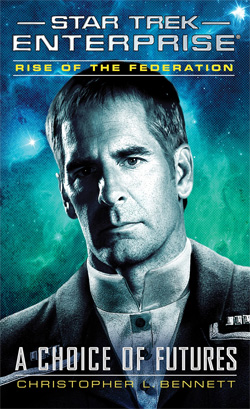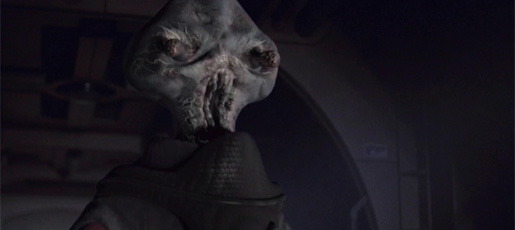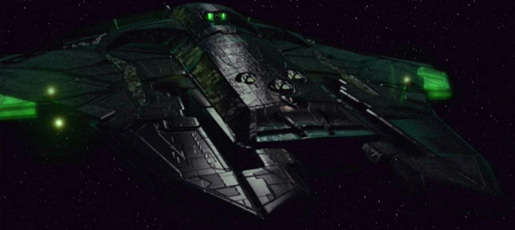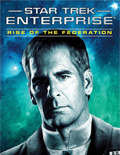 Star Trek Enterprise: Rise of the Federation – A Choice of Futures
Star Trek Enterprise: Rise of the Federation – A Choice of Futures
Christopher L. Bennett
Released: June 25, 2013
Simon & Schuster
![]()
![]()
![]()
![]()
![]()
Spoilers ahead for Rise of the Federation: A Choice of Futures!
A new nation has arisen from the ashes of the Romulan War: the United Federation of Planets, an unprecedented union of diverse species cooperating for the good of all. Admiral Jonathan Archer—the former captain of the Earth starship Enterprise, whose efforts made this union possible—envisions a vibrant Federation promoting galactic peace and a multispecies Starfleet dedicated to exploring strange new worlds. Archer’s former crewmates, including Captain T’Pol of the U.S.S. Endeavour and Captain Malcolm Reed of the U.S.S. Pioneer, work with him to secure that bright future. Yet others within the Federation see its purpose as chiefly military, a united defense against a dangerous galaxy, while some of its neighbors view that military might with suspicion and fear. And getting the member nations, their space fleets, and even their technologies to work together as a unified whole is an ongoing challenge.
When a new threat emerges from a force so alien and hostile that negotiation seems impossible, a group of unaligned worlds asks Starfleet to come to its defense, and the Federation’s leaders seize the opportunity to build their reputation as an interstellar power. But Archer fears the conflict is building toward an unnecessary war, potentially taking the young nation down a path it was never meant to follow. Archer and his allies strive to find a better solution…but old foes are working secretly to sabotage their efforts and ensure that the great experiment called the Federation comes to a quick and bloody end.
Notable Quote
“Our dead deserve to be honored, Phlox.”
“But do we really honor them by using them as an excuse to add to their numbers?” Phlox shook his head. “Sometimes, Thanien, you simply have to stop letting the past define your life and live for the future instead. After all, nothing we do can change the past—barring time travel, which in my experience causes more problems than it solves.” Thanien stared, but the doctor didn’t elaborate on what experience that might have been. “The only thing our choices can affect or change is the future. So it seems to me that the future is where our attention can be most usefully directed.”
– Dr. Phlox and U.S.S. Endeavour’s first officer, Commander Thanien, discussing past enmities and where the Federation should go from here.
Our Thoughts
The United Federation of Planets: an astropolitical entity that will, by the late 24th century, encompass 150 member worlds spread across 8000 lightyears. The Federation is based on democracy and self-determination, and becomes one of the major players in the Alpha and Beta quadrants of our galaxy. One question that has always been on my mind: how did the Federation come to be? We know that shortly after the Earth-Romulan War, the governments of Earth, Alpha Centauri, Vulcan, Andor, and Tellar came together to found the Federation, but we’ve never gotten the story of what those early years were like. Until now.
Rise of the Federation: A Choice of Futures does a superb job of fleshing out those early days of the Federation. Published under the Star Trek: Enterprise banner, A Choice of Futures isn’t exactly a continuation of the Enterprise television series, but rather shows the political and social landscape of Earth and the Federation several years later. Because of the time frame, the characters of Enterprise are major players in that arena, and thus are showcased in this novel.
I have to admit to a certain amount of giddy, fanboy excitement when I first heard that Christopher L. Bennett would be taking the reins of the Enterprise book series, an excitement that was magnified when I learned that this book would showcase the early years of the Federation. One of Mr. Bennett’s true strengths as a Trek writer is his enviable ability to weave together disparate bits of continuity minutiae into a surprisingly cohesive whole. One need only see his brilliance at reconciling the various Trek depictions of time travel into something resembling a logical “grand unified theory” of Star Trek temporal physics in his Department of Temporal Investigations novels, most notably Watching the Clock, to understand why this sort of project is perfect for this particular author. This latest endeavour by Mr. Bennett continues the tradition perfectly.

The “Mutes,” or “Vertians,” originally seen in an episode of Enterprise, represent a threat to peace in Rise of the Federation: A Choice of Futures.
With the birth of the Federation coming so soon after the end of the Romulan War, a period in which many Alpha Quadrant powers were threatened with war and destruction, how did the Federation manage to follow the path of peace upon which it seems to founded? Might it not have instead become another belligerent empire, imposing its will on its neighbours through unchecked territorial expansion? The struggle between these two ideologies is at the heart of A Choice of Futures. Both of these responses are exemplified through the reaction to attacks by a seemingly aggressive and territorial species, initially known only as the “Mutes.” These aliens, previously seen in the Enterprise episode “Silent Enemy,” have repeatedly threatened and attacked vessels from many of the powers in the region. However, their alien nature makes it nearly impossible to form any sort of connection. Communication seems completely out of the question. Those who are familiar with Orson Scott Card’s Ender’s Game and its sequels will recognize the concept of “Demosthenes’ Hierarchy of Foreignness.” Most of the alien species we see on Star Trek fall under the category of “Ramen”; that is, sentient beings who belong to another species, but with whom communication and understanding is possible. The “Mutes,” or “Vertians,” initially appear to be what Card’s Demosthenes would call “Varelse.” These are beings with whom no communication or understanding is possible, and there is no possibility of coexistence. It is only through the valiant and courageous efforts of our Starfleet heroes, in particular Captain T’Pol and Commander Sato, that we learn that the Vertians are not “Varelse,” and that their motivations aren’t what they first appeared to be. Rather than being the aggressive and violent people many assumed them to be, we learn that they in fact believe violence and killing of other sentient species to be morally reprehensible. If it weren’t for the “cooler heads” prevailing, the many voices in the Federation that called out for vengeance and retribution could easily have carried the day.
Similarly, the U.S.S. Pioneer under the command of Captain Malcolm Reed finds itself imperiled, and the crew learns how to extricate themselves from the situation through discovery and cooperation with a previously unknown species. Through the determination of a member of the crew to use every possible second before their supposedly assured doom to expand the frontiers of knowledge and discovery, the crew communicates with and enlists the aid of an unlikely ally. It is through these formative events that the Federation will slowly build its foundation of cooperation, mutual respect for all species, and equality for all sentients.

A Vertian starship, responsible for attacks on Starfleet and others.
At 336 pages, A Choice of Futures is not a particularly lengthy novel, but at the same time there is a great deal going on. Bennett manages to juggle all of the many story-lines deftly, without giving short shrift to any aspect of the story. In addition, our characters receive some lovely development along the way. In particular, Malcolm Reed is given a lot to do in this novel, and I thought that the author’s use of his character was perfect. Bennett has the voices of the characters down pat, and this came across most strongly with Malcolm and his discomfort in dealing with his crew on a personal level.
One small final note: I love Christopher Bennett’s inclusion of the refit NX-class starship in this novel! Ever since it was revealed by visual effects guru Doug Drexler, the design has fascinated me and added no small amount of regret to what I was already feeling that we didn’t get further seasons of Star Trek: Enterprise. Designated the “Columbia class” by Mr. Bennett, this new design is a beautiful little “missing link” between the Enterprise NX-01 and the later Constitution class U.S.S. Enterprise NCC-1701. I truly hope we get the opportunity to see this design grace the cover of a novel one day soon!
The Final Word
Unlike many of my fellow Star Trek fans, I rather enjoyed the television series Enterprise. The early days of Earth’s interstellar space exploration always fascinated me, and these early days of the Federation are even more exciting. I believe that many people who didn’t enjoy Enterprise would be hard-pressed to not love what Mr. Bennett offers in A Choice of Futures. Much like Kirsten Beyer‘s revitalization of the Voyager series, Christopher L. Bennett‘s take on the Star Trek universe post-Enterprise promises to be an excellent continuation and improvement upon what came before. I can’t recommend this novel enough, and I very much look forward to next year’s followup, Rise of the Federation: Tower of Babel.
– Reviewed by TrekCore’s Literature Editor, Dan Gunther, June, 2013
![]()
 |
Order Star Trek Enterprise – Rise of the Federation: A Choice of Futures |
Also by Christopher L. Bennett:
Star Trek: Ex Machina (2005)
Star Trek: Department of Temporal Investigations: Walking the Clock (2011)
Star Trek: Typhon Pact: The Struggle Within (2011)
Star Trek: Department of Temporal Investigations: Forgotten History (2012)
What did you think of Rise of the Federation: A Choice of Futures? Let us know in the comments below!
